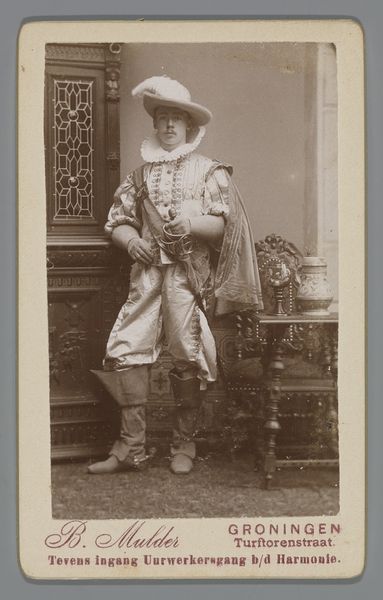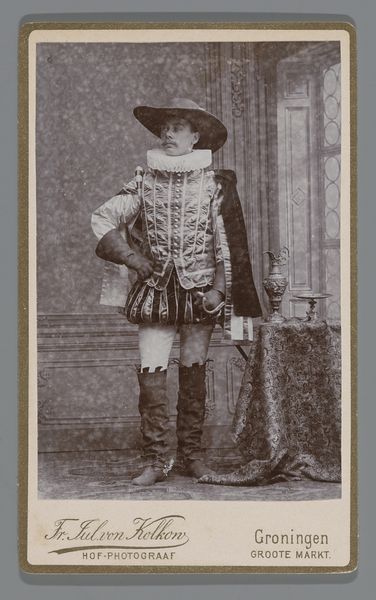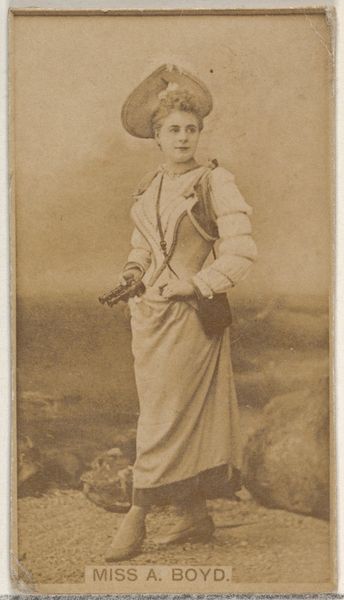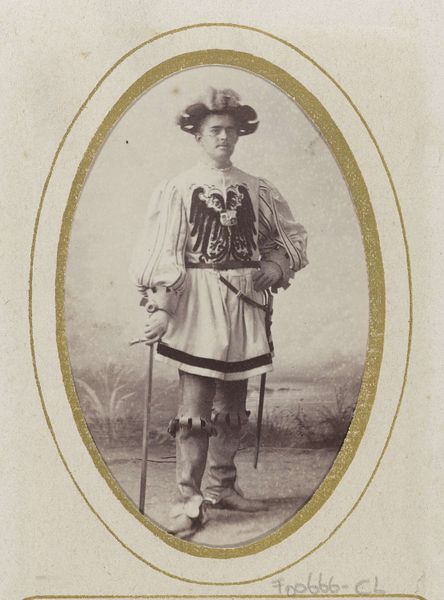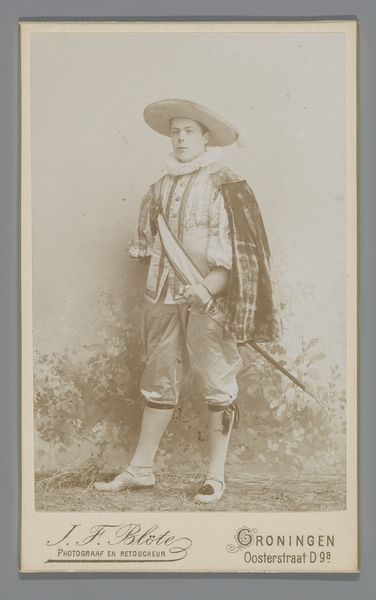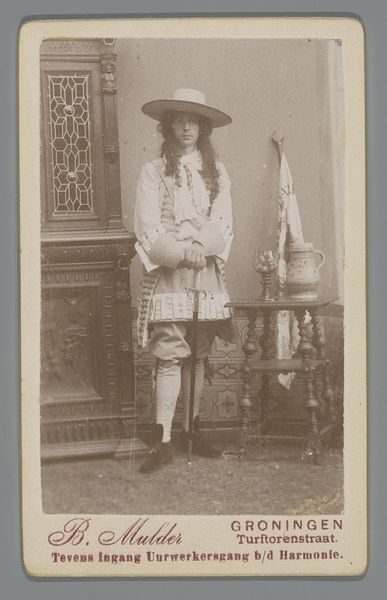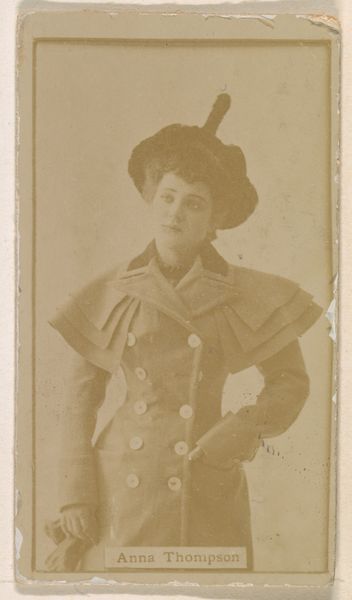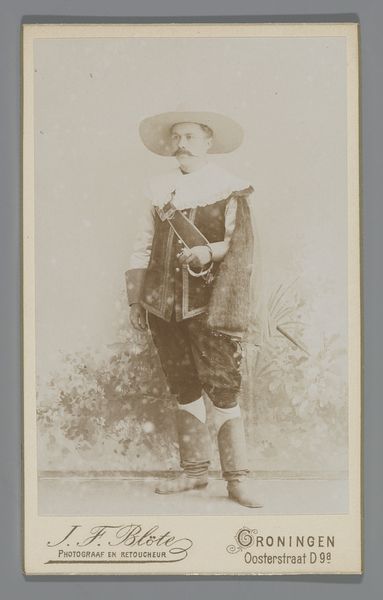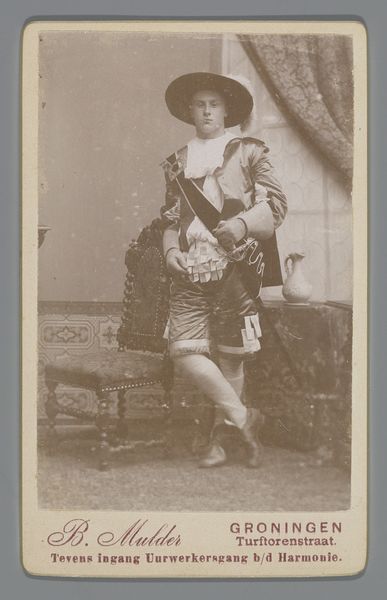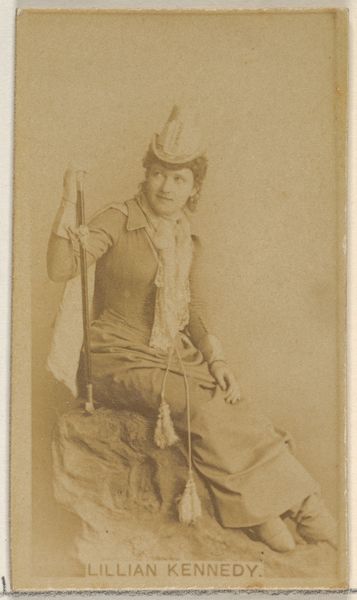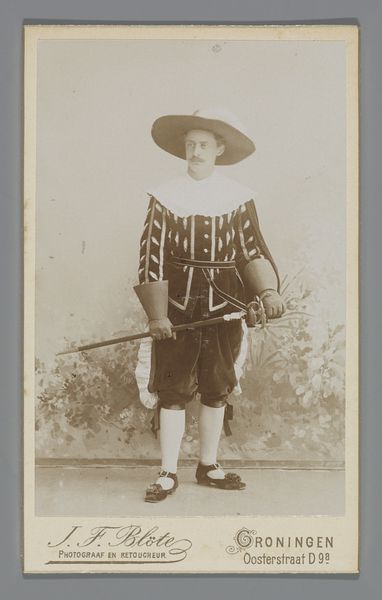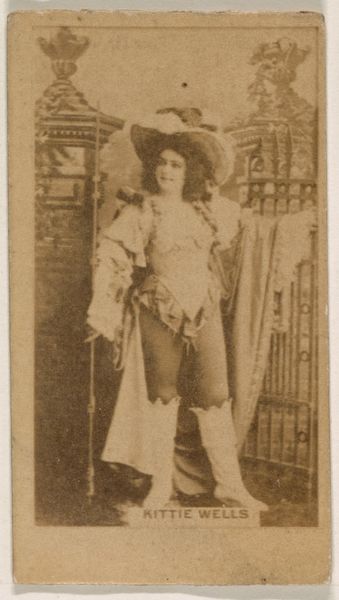
Portret van een onbekende Groningse student in maskeradekostuum c. 1890 - 1900
0:00
0:00
photography
#
portrait
#
photography
#
historical fashion
#
genre-painting
Dimensions: height 100 mm, width 64 mm, height 88 mm, width 58 mm
Copyright: Rijks Museum: Open Domain
Curator: This striking photographic portrait, titled "Portret van een onbekende Groningse student in maskeradekostuum", comes to us from the late 19th century, likely sometime between 1890 and 1900. The photographer was Friedrich Julius von Kolkow. Editor: My first impression? The subject’s flamboyant attire practically leaps from the faded sepia tones. The intricate patterns on the fabric and the way the light catches those puffy sleeves create an intriguing textural contrast. Curator: Precisely. Let’s delve deeper into the masquerade aspect. Masked balls and costume parties were social rituals—spaces where identity became fluid and performances of class and gender took center stage. Given that our sitter is an unknown student from Groningen, this image provides a fascinating glimpse into student life and bourgeois social practices of the time. How did he experience or subvert these roles? What hierarchies did they serve? Editor: Yes, but observe how the composition uses stark vertical and horizontal lines. Note how his pose mimics a theatrical contrapposto: this is carefully controlled stagecraft! Even the rolled parchment he’s holding echoes the curve of his hat. And, given it's a photograph, we are already one degree removed from reality and placed in a manufactured domain, which further distances him from our space in reality, too. Curator: It begs the question, doesn't it? Was this image conceived as mere entertainment, or does it serve a more strategic purpose? He is literally carrying a paper but obscured. Is the artist saying there's an aspect of ourselves as students and individuals that is also hidden? In the 19th century, portraits operated as declarations of social and political intention; such photographs would play critical roles in constructing individual and communal identities. It seems this piece serves as both commentary on self-identity and a larger sociopolitical performance, for the elites, that is, given it required money and connections to commission such a portrait. Editor: A well-stated summary, but one should consider that for every argument toward hidden identity we might just have the artist concerned about surface elements and formal aspects and considerations in visual language and aesthetic beauty. Curator: And for both interpretations, we meet the beauty and strangeness this artwork delivers as our takeaway.
Comments
No comments
Be the first to comment and join the conversation on the ultimate creative platform.
